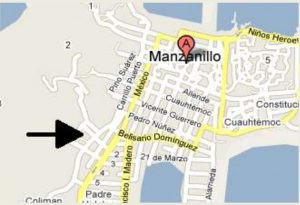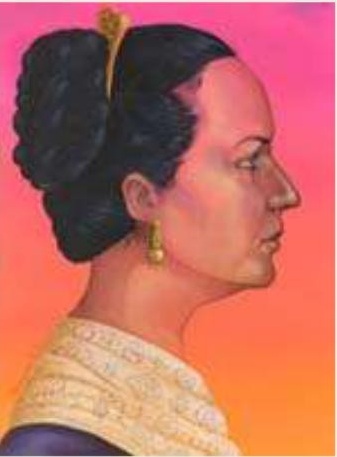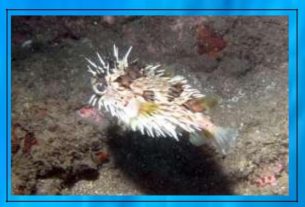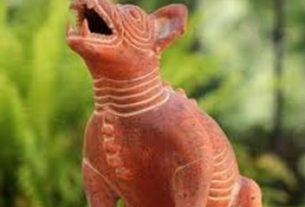By Terry Sovil from the December 2010 Edition

The Magistrate’s Wife
1768-1829
Born: 28 September 1768
Birthplace: Morelia, Mexico
Died: 02 March 1829
Place of Death: Parral, Chihuahua, Mexico
Best Known As: Heroine of the Independence of Mexico
 Doña Josefa Ortíz de Domínquez is considered the “Heroine of the Independence of Mexico”. She was born in Morelia (then called Valladolid) Michoacán on September 8th, 1768 and died at age 61 in Mexico City on March 2nd, 1829. The Spanish appointed Corregidores (magistrates or “correctors”) who were scattered throughout the Spanish domains including Mexico.
Doña Josefa Ortíz de Domínquez is considered the “Heroine of the Independence of Mexico”. She was born in Morelia (then called Valladolid) Michoacán on September 8th, 1768 and died at age 61 in Mexico City on March 2nd, 1829. The Spanish appointed Corregidores (magistrates or “correctors”) who were scattered throughout the Spanish domains including Mexico.
Miguel Domínguez was a Magistrate in Querétaro but our story isn’t about him, the Corregidor, but his wife, the Corregidora. She was the person “in charge” and she was able to change the course of history .
Both her parents, Juan José Ortiz and Manuela Girón de Ortiz, died shortly after her birth. Josefa was brought up by an older sister. Educated at the reputable Colegio de las Vizcainas, she both graduated and married Miguel Dominguez in 1791. They went to live in Querétaro, where her husband was assigned his duties. Querétaro was a major site for the independence movement and Josefa was in the right place to fulfill her role in history.
Josefa was of pure Spanish ancestry but like many of the Creole elite she despised the Spaniards born in Spain who displayed a very arrogant attitude toward the creoles. Her anti- Spanish attitude also came from her involvement in literary societies. It was the custom in that day for privileged creoles to organize such societies. They smuggled in works by Voltaire, Rousseau and Descartes, which were banned by the Church, and held lively discussions. These literary societies soon became political societies. The most important was in Querétaro.
They under estimated Josefa and using sympathizers that were all over town she was able to get the word to all of the hidden rebel leaders and they all escaped to initiate the uprising against Spain. Josefa paid a price for her patriotism. She was betrayed by a Captain Arias and arrested on September 13, 1810.
Josefa was confined to the Santa Clara convent in Querétaro and then transferred to Mexico City for trial. She was defended by her husband but found guilty and confined to the convent of Santa Teresa. She was so outspoken about her captors that they transferred her to another nunnery, Santa Catalina de Siena, where discipline was stricter. She was not released until 1821 when the Independence War ended.
While Josefa opposed European imperialism and though defiant of Spanish royal authority was still proud of her Spanish blood. She condemned Guadalupe Victoria, Mexico’s first president, when he expelled all Spaniards from Mexico. She refused any remuneration for her support of the independence movement.
At the age of 61 Josefa Ortiz de Domínguez died in 1829. . Sadly she did not live to see the new Independence Government draft a New Constitution at Querétaro on February 5th, 1917 and then proclaim Querétaro a Mexican State. She was first buried at Santa Catalina but her remains were later shipped to her home city of Querétaro. Josefa is honored in Mexico City with a statue and in 1969 a Twenty Peso bill was printed in her honor.
Josefa Ortiz de Domínquez had an independent spirit. She influenced her husband to support the cause and thus was able to alert key rebels to escape certain capture. She hated all types of oppression. She is as much a hero in the struggle for independence as any male. She is remembered as “La Corregidora”, “The Magistrates Wife”.
Download the full edition or view it online
—
Terry is a founding partner and scuba instructor for Aquatic Sports and Adventures (Deportes y Aventuras Acuáticas) in Manzanillo. A PADI (Professional Association of Dive Instructors) Master Instructor in his 36th year as a PADI Professional. He also holds 15 Specialty Instructor Course ratings. Terry held a US Coast Guard 50-Ton Masters (Captain’s) License. In his past corporate life, he worked in computers from 1973 to 2005 from a computer operator to a project manager for companies including GE Capital Fleet Services and Target. From 2005 to 2008, he developed and oversaw delivery of training to Target’s Loss Prevention (Asset Protection) employees on the West Coast, USA. He led a network of 80+ instructors, evaluated training, performed needs assessments and gathered feedback on the delivery of training, conducted training in Crisis Leadership and Non-Violent Crisis Intervention to Target executives. Independently, he has taught hundreds of hours of skills-based training in American Red Cross CPR, First Aid, SCUBA and sailing and managed a staff of Project Managers at LogicBay in the production of multi-media training and web sites in a fast-paced environment of artists, instructional designers, writers and developers, creating a variety of interactive training and support products for Fortune 1000 companies.




You must be logged in to post a comment.